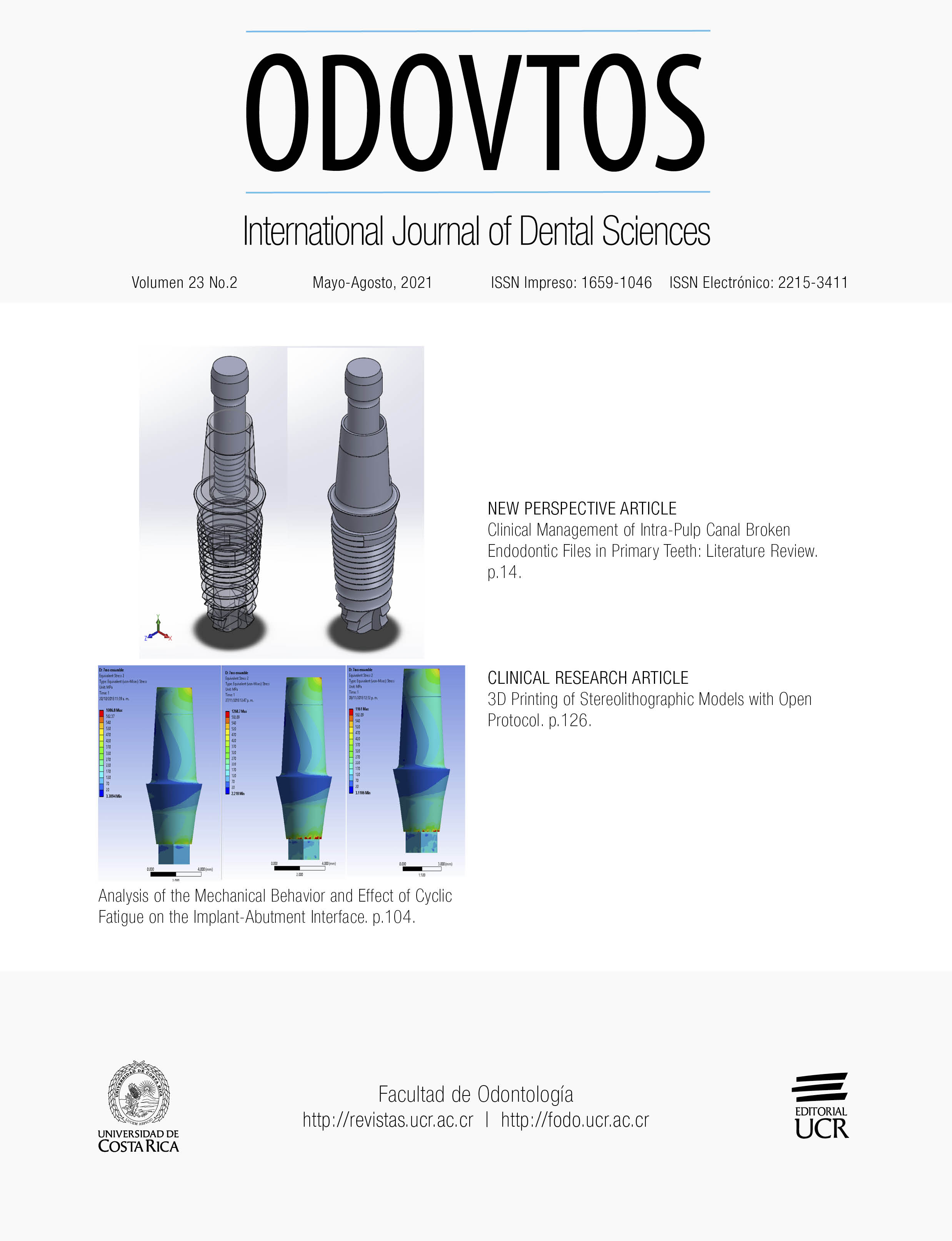Abstract
Purpose: Space maintainers are important for the health and placement of children’s primary and permanent teeth. However, plaque and caries levels can be negatively affected when a dental appliance is in the mouth. This study aims to evaluate the oral health of pediatric patients that have space maintainers applied as a result of early tooth loss. Methods: This study included 100 systemically healthy patients between the ages of 4-15 years that were treated with space maintainers due to early loss of teeth. Decayed, missing, filled tooth index values and dental plaque status of the participants were recorded. Controls were performed in the 6th and 12th month. The index results were compared and evaluated statistically using ANOVA and paired-t-tests. Results: A total of 116 space maintainers, including 36 band and loops, 16 lingual arches, 21 palatal arches, 43 removable appliances, were evaluated in the study. Statistically significant differences were found between the pre-treatment and post-treatment index values (p<0.001). In the group of band and loops and removable space maintainers; the increases in DMFT/dft values of 6th month and 12th month according to initial DMFT/dft values were statistically significant (p<0.05). For plaque index, the increase in 12th month of all types of appliances were found statistically significant (p<0.001). The greatest increase in plaque index level was seen in the teeth of patients that had been treated with a lingual arch. Conclusions: Incompatible space maintainers can lead to caries, increased plaque accumulation, demineralized areas, and periodontal problems. The accumulation of plaque and difficulty of cleaning the teeth, especially in the fixed space maintainers, negatively affects the health of teeth. For this reason, good oral hygiene should be provided to patients and controls should be regularly performed.
References
Ngan P., Alkire R. G., Fields H. Management of Space Problems in the Primary and Mixed Dentitions. JADA. 1999; 130: 1330-1339.
Rajab, L. D. Clinical performance and survival of space maintainers: Evaluation over a period of 5 years. ASDC J Dent Child. 2002; 69: 156-160.
Baroni C., Franchini A., Rimondini L. Survival of different types of space maintainers. Pediatr Dent. 1994; 16: 360-1.
American Academy of Pediatric Dentistry Guideline on Management of the Developing Dentition and Occlusion in Pediatric Dentistry. Clinical Practice Guidelines AAPD. 2014; 253-265.
Kargul B., Caglar E., Kabalay U. Glass Fiber-reinforced Composite Resin as Fixed Space Maintainers in Children: 12-month Clinical Follow-up. J Dent Child. 2005; 72 (3): 109-112.
Setia V., Pandit I. K., Srivastava N., Gugnani N., Sekhon H. K. Space Maintainers in Dentistry: Past to Present. J Clin and Diagn. 2013; 7 (10): 2402-2405.
Tunc E. S., Bayrak S., Tuloglu N., Egilmez T., İsci D. Evaluation of Survival of 3 Different Fixed Space Maintainers. Pediatr Dent. 2012;34(4): e97-e102.
Rock W. P. UK National Clinical Guidelines in Paediatric Dentistry. Extraction of primary teeth- balance and compensation. Int J Paediatr Dent. 2002; 12:151-3.
Löe H. The Gingival index, the plaque index and the retention index systems. J Periodontol. 1967; 38: 610‑6.
Kay E. J., Mills I., Tredwin C., Lambe P., Nassani M. Z. Comparison of utility weighted DMFT with patient-reported oral well-being. J Oral Rehabil. 2014; 41: 155-161.
Fathian M., Kennedy D. B., Nouri M. R. Laboratory-made Space Maintainers: A 7-year Retrospective Study from Private Pediatric Dental Practice. Pediatr Dent. 2007; 29: 500-6.
Arıkan F., Eronat N., Candan Ü., Boyacıoğlu H. Periodontal Conditions Associated with Space Maintainers Following Two Different Dental Health Education Technique. J Clin Pediatr Dent. 2007; 31 (4): 229-234.
Keriş E. Y., Atabek D., Güngör K. Effects of fixed and removable space maintainers on halitosis. BMC Oral Health. 2016; 16 (99): 1-7.
Arıkan V., Kızılcı E., Ozalp N., Ozcelik B. Effects of Fixed and Removable Space Maintainers on Plaque Accumulation, Periodontal Health, Candidal and Enterococcus Faecalis Carriage. Med Princ Pract. 2015; 24: 311-317.
Torkan S., Oshagh M., Khojastepour L., Shahidi S., Heidari S. Clinical and Radiographic Comparison of the Effects of Two Types of Fixed Retainers on Periodontium- A Randomized Clinical Trial. Prog Orthod. 2014; 15: 47.
Abdulhameed S. M., Abdul-Kareem Mahmood M., Ahmed A. S. Evaluation of clinical success and survival rates of different types of space maintainers used in pediatric dentistry. J Adv Med Res. 2014; 4 (4): 1-10.
Kundu R., Tripathi A. M Jaiswal J. N, Ghoshal U., Palit M., Khanduj S. Effect of fixed space maintainers and removable appliances on oral microflora in children: An in vivo study. J Indian Soc Pedod Prev Dent. 2016; 34 (1): 3-9.
Aydinbelge M., Cantekin K., Herdem G., Simsek H., Percin D., Parkan O. M. Changes in Periodontal and Microbial Parameters after the Space Maintainers Application. Niger J Clin Pract. 2017; 20 (9): 1195-1200.

